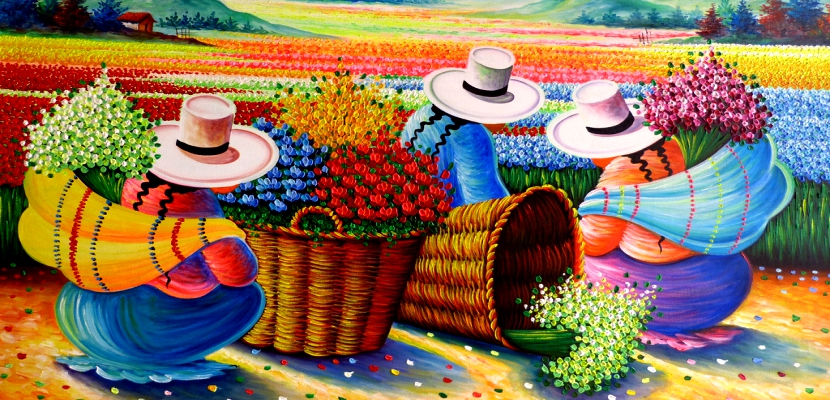
El Pre-Columbian art finds its main expression in ceramics, as well as in stone sculpture, goldsmithing, architecture and textiles. Most of these works are decorated with engraved or painted motifs, but the first manifestations of painting on canvas were commissioned by Spanish settlers in the XNUMXth century. In addition to this rupture imposed on the techniques artistic, we are witnessing an abrupt step from traditional Inca symbolism to a more realistic representation of the world under the influence of the European Renaissance.
From the XNUMXth to the XNUMXth century, the main commissions come from the cut of viking and of those who direct the economic exploitation of the regions. In this way, the appearance of schools related to economic urban centers is observed. Is about works religious with evangelizing intention that were carried out on a large scale from the end of the 212th century, commissioned by a rich clergy, who intended to cover the entire territory with churches and convents. We have the proof in the reading of a contract of the time that makes mention of more than XNUMX religious scenes commissioned in a few months to the painter Garcia and Dthin.
To cope with this massive demand, European painters quickly organize large workshops where they teach their creative methods to indigenous people. The originality of this corrients pictorial The so-called colonial resides in the miscegenation from which indigenous artists come who translate their own traditions into this new imposed mode of expression.
The school of Cuzco
The teacher who inaugurates the style called Cuzquiano is the Italian Jesuit Bernard Done, arrived in Peru in 1575. He begins with commissions from many convents and churches in the capital, as a member of the Lima school, and translates the Spanish academic tradition in the light of the Italian Renaissance, alongside Mateo Pérez de Alesio and Angelino medoro. Luis de Riaño, a student of the latter, covered the entire Andahuaylillas Church, known as the Sistine Chapel of the Andes, with frescoes. But Bitti innovates by introducing the mannerism in vogue in Europe, on the occasion of the construction of the Cuzco Cathedral in 1575.